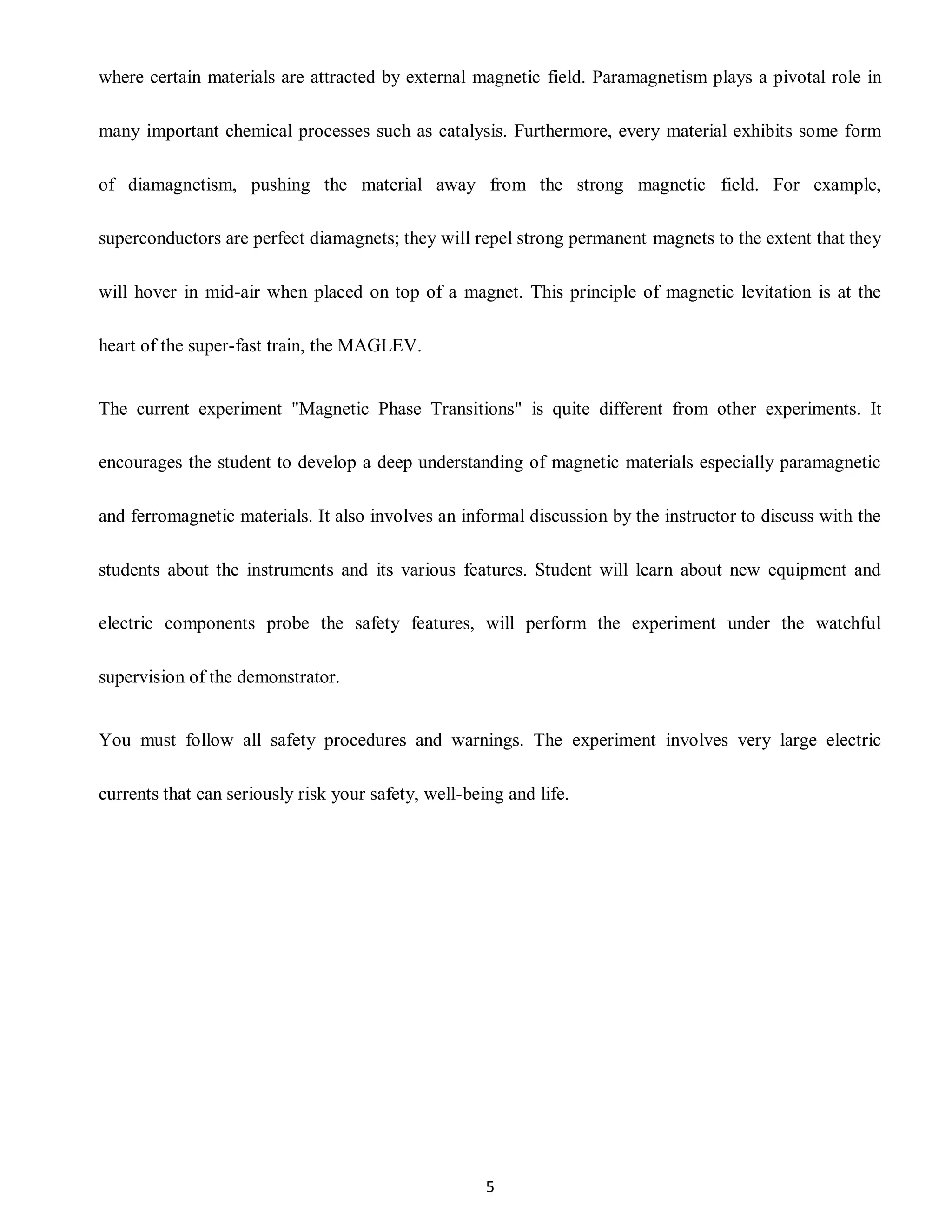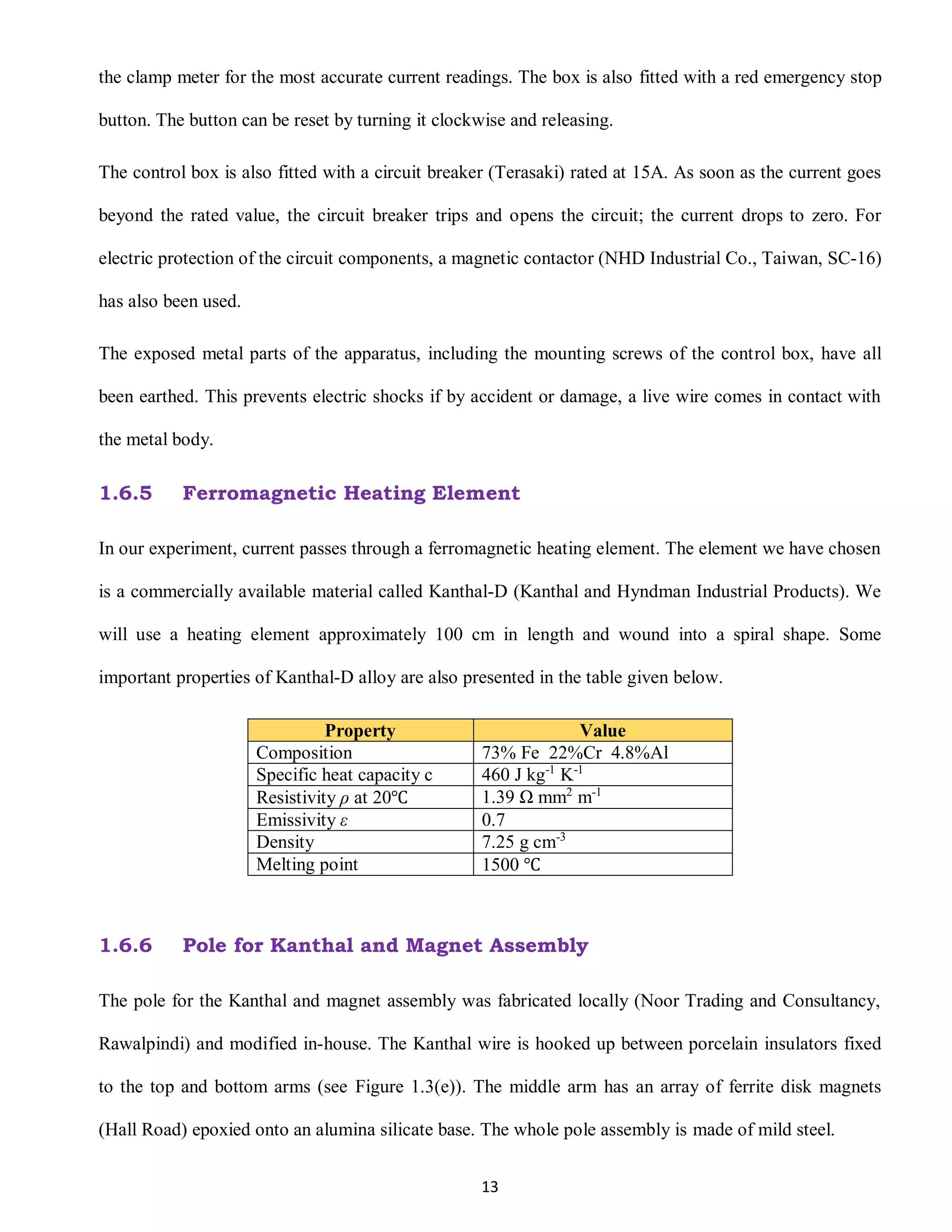The document provides a comprehensive overview of an experiment focused on magnetic phase transitions, emphasizing the properties and behavior of ferromagnetic and paramagnetic materials. It includes theoretical background, experimental objectives, the setup of apparatus, safety precautions, and expected learning outcomes related to electricity, magnetism, and heat transfer. Additionally, it details the Curie temperature phenomenon and essential electrical concepts relevant to the experiment.

















![19
1.11 References
[1] “Specific heat capacity”, Web: http://www.bbc.co.uk/schools/gcsebitesize/science/aqa/
heatingandcooling/buildingsrev3.shtml.
[2] S. O. Kasap, “Principles of Electronic Materials and Devices”, McGraw Hill, (2006).
[3] W. D. Callister, “Materials Science and Engineering: An Introduction”, 6th Edition, John Wiley
& Sons., (2004).
[4] R. Schaeffer, G. Herzer, “Continuous magnetization patterns in amorphous ribbons”, IEEE
Trans. Magn. 37, 2245 (2001).
[5] S. Valesco, F. L. Roman, “Determining the Curie temperature for iron and nickel”, Phys.
Teacher 45, 387 (2007).
[6] T. Lewowski, K. Wozniak, “Measurement of Curie temperature for gadolinium: a laboratory
experiment for students”, Eur. J. Phys. 18, 453 (1997).
[7] “Electrical energy”, Web: https://en.wikipedia.org/wiki/Electrical_energy.
[8] C. Kizowski, S. Budzik, J. Cebulski, “Finding the Curie temperature for ferromagnetic
materials”, Phys. Teacher 45, 31 (2007).
[9] “Resistance heating alloys and systems for industrial furnaces”, Kanthal, Web:
http://ravi.lums.edu.pk/physlab.
[10] M. Connors, “Measurement and analysis of the field of disk magnets”, Phys. Teacher 40, 308
(2002).
[11] J. P. V. Hof, J.A. Bain, R.M. White, J-G. Zhu, “An undergraduate laboratory in magnetic
recording fundamentals”, IEEE. Trans. Educat. 44, 224 (2001).
[12] A. A. Clauss, R. M. Ralich, R. D. Ramsier, “Hysteresis in a light bulb: connecting electricity
and thermodynamics with simple experiments and simulations”, Eur. J. Phys. 22, 385 (2001).](https://image.slidesharecdn.com/1magneticphasetransitions-200311115813/75/Magnetic-Phase-Transitions-18-2048.jpg)